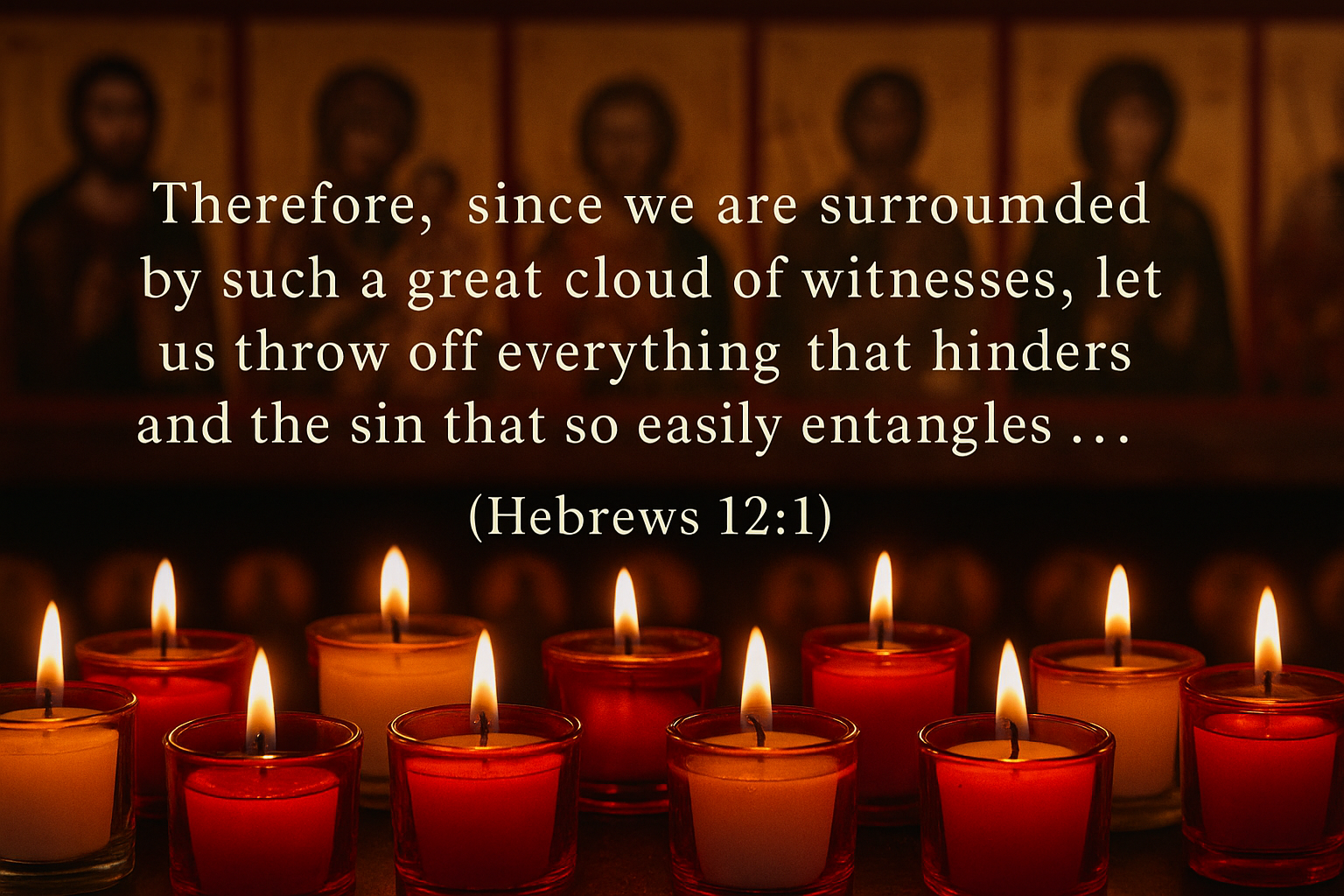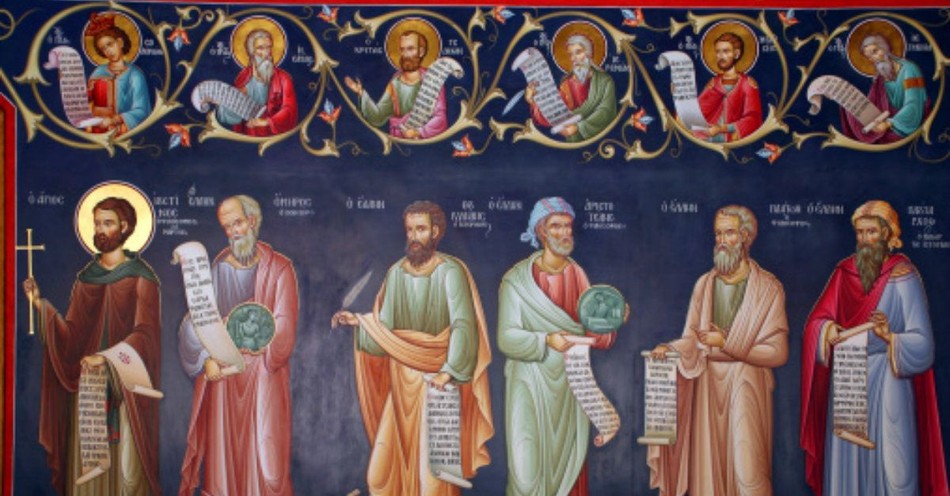In the U.S., we know Halloween. Even if we didn’t celebrate the holiday, it dominated our culture for a few weeks. Candy filled the shelves at grocery stores. TV played Halloween-themed or scary movies and shows. Department stores sold costumes and paraphernalia. Even the Peanuts had a Halloween special.
Many Christians, especially Evangelicals, don’t realize October 31 happens during a couple important dates on the Catholic liturgical calendar that have nothing to do with ghosts or witches or dressing up for candy. October 31 is the eve before a major feast, All Saints’ Day. Unknown to many modern Christians, this holiday has an interesting background and meaning.
What Is the History and Origin of All Saints Day?
Many Christians observe All Saints’ Day on November 1st, and the day honors all saints, both known and unknown. Initially, the church remembered martyrs and saints on various days throughout the year, but over time, many others were overlooked and others didn’t have their own day. Therefore, the church established a general day to honor all saints and martyrs.
In Catholic teaching, a saint is a person in heaven with the Lord who has lived a life of heroic virtue, holiness, or martyrdom. The Catholic church officially recognizes a saint through a process called canonization. Catholics believe they can pray to these saints to help people on earth intercede before God, so All Saints’ Day may include praying to the saints for help. Additionally, believers look to the saints as models for how to live in this world by faith.
Back in the 4th century, early Christians in the Roman Empire celebrated a feast of martyrs in some local communities, focusing on those who died for their faith. The New Testament underscored how martyrs were significant in Christianity (Revelation 6:9-11). In the early 600s, Pope Boniface IV consecrated the Pantheon in Rome and dedicated it to the Virgin Mary and all the martyrs. This introduced the idea of honoring saints, although not yet a universal feast day.
Moving to the 8th century, Pope Gregory III officially moved the feast for saints to November 1st and dedicated a chapel in St. Peter’s Basilica to all saints. By the Middle Ages, All Saints’ Day became widely recognized across the whole of Christendom in the Catholic church. In several parts of Europe, it also became a time to remember the dead, so All Souls’ Day follows it on November 2nd. Over time, like many holy days, All Saints’ Day became more formal with meals, a Mass, and pilgrimages.
Today, All Saints’ Day is still a major day in Christian liturgy, especially among the Roman Catholic Church and many Protestant denominations.
What Is the Difference Between All Saints Day, All Souls Day, and Halloween?
All Saints’ Day, All Souls’ Day, and Halloween are closely connected but individual observances. As we’ve already mentioned, All Saints’ Day honors the Catholic saints and martyrs. Over time, it included both officially recognized saints and others who might not be canonized but still lived a particularly spiritual life.
While All Saints’ Day focuses on those who have attained heaven, All Souls’ Day is dedicated to praying for the dead, especially those in purgatory who haven’t reached heaven yet. All Souls’ Day is intended to remember and pray for the souls of loved ones, seeking God’s mercy to forgive and grant grace to the dead to come into the Lord’s presence. The Catholic doctrines of purgatory and praying for the dead sit at the center of All Souls’ Day, believing that people can help departed souls move on in the next life.
Halloween falls on October 31st, the day before All Saints’ Day, and has roots in both Christian and pagan traditions. The word “Halloween” comes from “All Hallow’s Eve,” meaning the night before All Saints’ Day. While some of the origins could have come from the Celtic Samhain festival, All Hallow’s Eve became a solemn vigil, marked with prayer and fasting, preparing hearts to honor the saints on November 1st and pray for the dead on November 2nd. Early All Hallow’s Eve services focused on hope, resurrection, and the Christian community. Over time, as pagan and secular ideas adapted the day, Halloween became a more secular holiday with costumes, trick-or-treating, and spooky themes, far removed from the original Christian traditions.
What Does the Bible Say about Saints?
The Bible defines a “saint” as a person set apart, holy, and dedicated to God. Scripture uses the term to refer to everyday believers, not only those who have proven especially holy and virtuous.
In the Old Testament, the Hebrew word for “saint” is quadosh, meaning holy or set apart, similar terms used when referring to God’s holiness (Exodus 15:11) and a holy Israel (Psalm 106:16). The Old Testament often referred to angels as “holy ones,” or qadosh. The book of Daniel first uses quadosh to refer to people like angels. Daniel 7 expands the idea of saints to believers who will inherit the Kingdom. The saints here aren’t only those in heaven but also those who will one day share in the future Kingdom, those faithful to God (Daniel 7:18). This marks a major shift, revealing some humans as a distinct heavenly people on earth.
The New Testament uses the Greek word hagios for “saints,” which also means holy or sacred. Taking the idea from Daniel 7, the New Testament clearly refers to all Christ's disciples as saints, not only a select group. Those who have repented and been born again are holy ones (Romans 1:7, 1 Corinthians 1:2). This reveals how every born-again believer is holy, set apart, and called to be God’s messenger as supernatural servants like the angels.
The Bible does honor notable, faithful people like Abraham, Moses, and others, but it doesn’t separate them as “saints” the way later Catholic tradition has.
What Are the Different Ways Christians Observe All Saints Day?
Roman Catholics treat All Saints’ Day with the most importance, usually observing it with a Mass highlighting the saints, encouraging all believers to follow their example. Catholics will also seek the saints’ help to intercede on their behalf to God. Catholics might also visit cemeteries to pray for the dead, including saints and their family or friends, offering flowers, candles, and special prayers. These traditions point to the continuity and unity of the church across both heaven and earth. In some regions, people dress in white to symbolize purity and holiness.
Eastern Orthodox believers honor saints throughout the year on various feast days, but they also observe All Saints’ Day. Orthodox Christians attend a church service on All Saints' Day to sing hymns and remember the saints. They usually focus on the lives of local saints and highlight their faithfulness and impact on the church.
The more liturgical Protestant churches, like Lutherans and Anglicans, celebrate All Saints’ Day with a special church service to read the names of the saints and martyrs, both from history and the Bible. The sermon calls the congregation to live a holy life, pointing to the ideas of legacy and future reward.
What Are Some Important Bible Verses and Prayers for All Saints Day?
There are a few verses and prayers to use during All Saints’ Day.
One major passage is Revelation 7:9-17, which includes: “After this I looked, and behold, a great multitude that no one could number, from every nation, from all tribes and peoples and languages, standing before the throne and before the Lamb, clothed in white robes, with palm branches in their hands …” These scriptures reveal the heavenly reality, a massive group of people from all lands and nations, worshipping God on the Throne. In Christ, we are connected with them now (Colossians 3:1-3) and will be with them in the future.

The writer of Hebrews encourages believers to run the race of faith with endurance since a “great cloud of witnesses,” or the saints, have gone before and watch us from the next life. “Therefore, since we are surrounded by such a great cloud of witnesses, let us throw off everything that hinders and the sun that so easily entangles …” (Hebrews 12:1)
Regarding prayers, the centuries of liturgy in the different denominations provide many examples. The Collect for All Saints’ Day asks God to help us follow the example of the saints and remain in the faith:
“Almighty God, you have knit together your elect in one communion and fellowship in the mystical body of your Son Christ our Lord: Give us grace so to follow your blessed saints in all virtuous and godly living, that we may come to those unspeakable joys which you have prepared for those who unfeignedly love you…”
Another fitting prayer is the Prayer for the Church Triumphant, acknowledging and honoring the influence of the saints who went before us.
“O God, the King of saints, we praise you for all the saints who have finished their course in your faith and fear; for the example of their lives, for the inspiration of their witness, and for the joy of their eternal rest…”
How Should Christians Approach All Saints Day?
The Bible doesn’t establish a day to celebrate saints. Neither does the Scripture point to any mediator or intercessor between us and God (1 Timothy 2:5). Only Jesus is the High Priest (Hebrews 7:24-25). At the same time, the Bible does highlight heroes of the faith as examples for us (Hebrews 11), and we read passages on how we remain connected with all believers in Christ, whether living or dead. While it is good and biblical to honor men and women of faith, we must also remember how every believer is a saint by the Holy Spirit.
All Saints’ Day gives us an opportunity to celebrate and reflect on the lives of those who have modeled a deep faith in Christ. God commands us to honor others for their faith, courage, and wisdom. Hebrews 13:7 encourages us to “remember your leaders, who spoke the word of God to you. Consider the outcome of their way of life and imitate their faith.” Honoring such people isn’t elevating them above others, or worshipping them, or seeking them as intercessors, but recognizing their faithfulness and inspiration to live faithful lives. With the Spirit inside us, we have the same opportunity to live such faith and inspire others.
On All Saints’ Day, we can remember how all believers, those in heaven and those on earth, are united in Christ, who sits at the right hand of the Father. Scripture teaches that our lives are hidden in Christ, and nothing can break that bond, not even death. This truth encourages us to meditate on the communion of the saints, a fellowship across time and space, even transcending death. As we honor others who have gone before us, we remember the urgency of the shared family and calling. To live such a communion leads us to the importance of unity in the Body of Christ. We all exist in him because of his blood. We should do our part to act in spiritual unity, loving one another as Christ loved us and showing we belong to Jesus (John 13:34-35).
We should approach All Saints’ Day with humility, both honoring faithful examples and acknowledging we are all equal members in the Body of Christ. As we reflect on the saints, they inspire us to live holy lives for God in all we do.
Peace.
Read More about All Saints' Day:
All Saints' Day: The Meaning and History behind November 1st Holiday
What Difference Between Halloween All Saints Day and All Souls Day?
Beautiful All Saints Day Prayers to Honor Past Christians
Photo: ©Thinkstock




